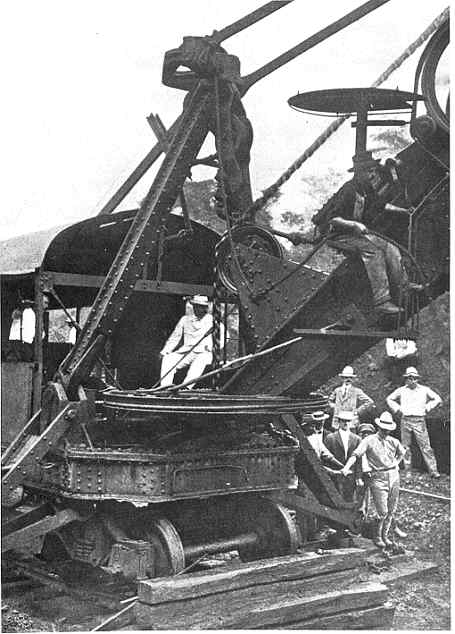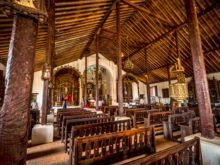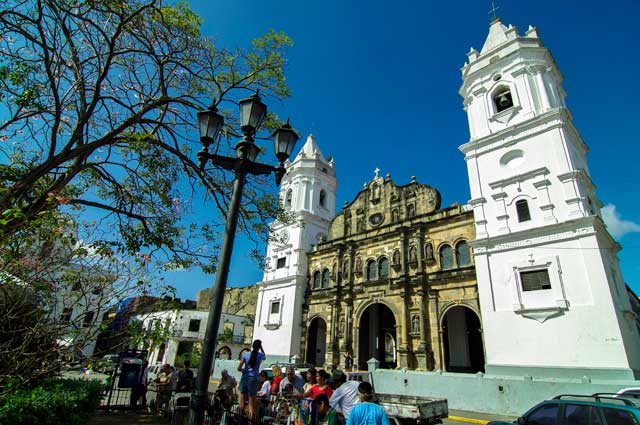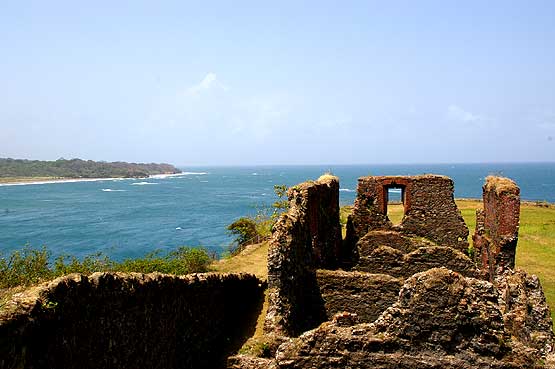Dive into Panama’s Past
Why Check Out Panama’s Historical Spots?
Panama’s got some serious history vibes going on. It’s like a giant time capsule waiting to be cracked open. Whether you’re a history buff or just someone who loves a good story, Panama’s historical sites are where it’s at. From ancient tribes to Spanish forts and the engineering marvel that is the Panama Canal, there’s a lot to soak in.
These places aren’t just old buildings and ruins—they’re storytellers. Each site whispers tales of indigenous tribes, colonial conquests, and epic battles. And the best part? You get to learn all this while surrounded by some of the most stunning scenery you’ll ever see. Trust me, exploring Panama’s historical sites is a no-brainer for any traveler.
Panama’s Cultural Melting Pot
Panama’s culture is like a rich stew, simmering with flavors from all over. Indigenous tribes, Europeans, and Afro-Panamanians have all thrown their ingredients into the pot, creating a cultural feast. Here’s a quick rundown of what makes Panama’s heritage so special:
| Cultural Element | What’s the Deal? |
|---|---|
| Indigenous Cultures | Tribes like the Ngäbe-Buglé and Kuna keep their traditions alive through crafts and customs. |
| Colonial Architecture | Spanish colonial vibes mix with modern styles in places like Casco Viejo Panama. |
| Afro-Panamanian Influence | Music, dance, and food get a spicy twist from Afro-Panamanian roots, especially during festivals. |
| Festivals and Celebrations | Events like Carnaval and the Festival of the Black Christ are a blast, showcasing Panama’s lively spirit. |
These historical sites are your ticket to really getting Panama. They offer a genuine peek into the local culture. Whether you’re wandering through the ruins of Panama Viejo or marveling at the Panama Canal, each spot adds a piece to the puzzle of Panama’s unique identity.
For more on Panama’s awesomeness, don’t miss our articles on panama beaches and panama rainforest.
The Panama Canal
The Engineering Marvel’s Historical Significance

Theodore Roosevelt visiting the Panama Canal construction site in 1904, pictured wearing a Panama hat
The Panama Canal is a jaw-dropping feat of engineering and a crucial link for global trade. Finished in 1914, this waterway slashed travel time between the Atlantic and Pacific Oceans, putting Panama on the map as a major player in international commerce. Building the canal was no walk in the park—workers faced disease, tough terrain, and tricky engineering problems.
But the canal’s importance goes beyond just moving ships. It’s a symbol of human grit and creativity. Thousands of workers from all over the world came together to make it happen, creating a melting pot of cultures that still exists in Panama today. The canal didn’t just change trade routes; it boosted the economy and spurred development in the region.
Visitor Experience and Highlights
A trip to the Panama Canal is a must-do. Start at the Miraflores Locks Visitor Center, where you can watch the locks in action and dive into the canal’s history with some cool exhibits.
| Visitor Experience Highlights | Description |
|---|---|
| Observation Deck | Get a bird’s-eye view of the canal and watch ships pass by. |
| Interactive Exhibits | Learn about the canal’s engineering and history in a fun way. |
| Café and Gift Shop | Grab a bite of local food and pick up some souvenirs. |
| Canal Tours | Hop on a boat tour to see the canal up close from the water. |
Don’t stop there—check out the nearby Panama museums to dig deeper into the canal’s story. For the thrill-seekers, Panama Canal tours offer scenic boat rides through the locks.
The Panama Canal isn’t just a relic of the past; it’s a living, breathing marvel of progress and innovation. It sparks the imagination of visitors young and old, making it a must-see on any Panama adventure.
Casco Viejo
Casco Viejo, the heart of Panama City’s history, is a treasure trove of colonial charm. With its narrow streets and colorful buildings, it’s a must-see for anyone wanting to dive into Panama’s past.
Strolling Through Colonial Beauty
Casco Viejo’s architecture is a mix of Spanish, French, and Italian styles. The buildings, some dating back to the 1600s, are a feast for the eyes with their detailed facades and vibrant balconies.
| Architectural Feature | Description |
|---|---|
| Colonial Buildings | Stucco walls and red-tiled roofs. |
| Churches | Highlights include the Metropolitan Cathedral and the Church of San Jose. |
| Plazas | Historic squares perfect for a leisurely break. |
As you wander the cobblestone streets, every turn reveals another piece of history. The area’s preservation efforts mean you can still feel the old-world charm, making it a photographer’s dream.
The Soul of the Old Quarter
Casco Viejo isn’t just about pretty buildings; it’s a cultural hotspot too. Recognized as a UNESCO World Heritage Site, it plays a big role in Panama’s story.
Dive into local culture with visits to art galleries, museums, and street performances that showcase the lively spirit of the Panamanian people. And don’t miss the local eateries and cafes, where you can taste the flavors of Panama.
| Cultural Aspect | Highlights |
|---|---|
| Museums | Check out the Panama Canal Museum and the Interoceanic Canal Museum. |
| Festivals | Join in local celebrations and events. |
| Art | Explore galleries featuring local artists. |
Casco Viejo is a lively mix of history and culture, making it one of the top Panama historical sites to explore. Whether you’re meandering through its streets or soaking up the local vibes, Casco Viejo offers an experience you won’t forget. For more adventures, check out the best places to visit in Panama.
Panama Viejo
Panama Viejo, the first Spanish city on the Pacific coast of the Americas, is a must-see for anyone diving into Panama’s rich history. This UNESCO World Heritage site offers a peek into the early colonial days and the vibrant culture that has shaped the nation.
The Ruins of the First Spanish City
Dating back to 1519, Panama Viejo is one of the oldest European settlements in the Americas. Founded by Pedro Arias de Ávila, it became a crucial port for Spanish expeditions. Pirate Henry Morgan destroyed it in 1671, leading to the creation of the new city, Casco Viejo.
Visitors can wander through the remnants of this historic city, marveling at the impressive structures that once stood tall. Key highlights include:
| Feature | Description |
|---|---|
| Cathedral of Our Lady of the Assumption | The remains of the original cathedral, showcasing beautiful stonework. |
| The Watchtower | A stunning viewpoint that offers a panoramic view of the ruins and the surrounding area. |
| The Museum of Panama Viejo | An informative museum that provides context to the history and significance of the site. |
| The Plaza de la Independencia | A historical square where important events took place, now a peaceful spot for reflection. |
What Visitors Can Expect to See
Travelers visiting Panama Viejo can expect a captivating experience filled with historical significance. The site is well-preserved, allowing visitors to envision life during the Spanish colonial era. Guided tours are available and provide enriching insights into the history and architecture of the ruins.
Additionally, the site has well-maintained pathways and informative plaques, making it accessible for travelers of all ages. The combination of history, culture, and stunning views makes Panama Viejo one of the top panama tourist attractions that shouldn’t be missed.
For those interested in exploring more of Panama’s rich heritage, nearby destinations such as Casco Viejo Panama and the Panama Canal tours offer further opportunities to delve into the nation’s past.
Fort San Lorenzo
The Role of Fort San Lorenzo in History
Fort San Lorenzo is a piece of Panama’s rich history, built by the Spanish in the late 1500s. This fort was all about protecting the entrance of the Chagres River and keeping the Pacific transit routes safe. It was a key player in fending off pirates and rival nations, making it a crucial military spot back in the day.
Over the years, Fort San Lorenzo saw its fair share of battles and changing hands, a true reflection of the chaotic colonial times. Its prime location allowed the Spanish to keep an eye on and protect the trade routes that were vital for shipping gold and other treasures from the Americas to Spain. Today, you can walk through this historic site and get a real feel for its past, making it a must-visit among Panama’s historical sites.
Unique Features of the Fort
Fort San Lorenzo has some pretty cool features that draw in visitors. Its tough stone and mortar structure, with walls thick enough to take a cannon blast, shows off the military design of its time—both practical and sturdy.
Key Features of Fort San Lorenzo
| Feature | Description |
|---|---|
| Location | Overlooking the Chagres River |
| Built | Late 1500s |
| Wall Thickness | Up to 10 feet in some spots |
| Wall Height | Around 30 feet |
| Access | Via a scenic trail through lush greenery |
You can roam around the fort’s remains, check out the old gunpowder storages and barracks, and soak in the stunning views of the area. The mix of historical importance and unique architecture makes Fort San Lorenzo a fascinating stop on any Panama trip. If you’re into history, also check out Casco Viejo and Panama Viejo.
The Embera Village
Dive into Indigenous Culture
The Embera Village is your ticket to experiencing the heart and soul of Panama’s indigenous heritage. Tucked away in the lush rainforest, this lively community opens its doors to share their customs, crafts, and everyday life. Here, you can chat with the locals, soak up their art, dance, and music, and truly get a feel for their world.
One of the coolest parts of visiting the Embera Village is watching traditional weaving and wood carving in action. These artisans create stunning pieces that scream cultural pride. And guess what? You can roll up your sleeves and join in on workshops to try these ancient techniques yourself.
The Embera folks are famous for their colorful clothes and intricate body paint, each design telling a story. Sit down for a storytelling session with the elders, and you’ll walk away with a deeper appreciation for their rich history. This kind of cultural exchange isn’t just a visit—it’s an experience that sticks with you long after you leave Panama.
History and Fun Stuff to Do
The Embera Village isn’t just a pretty face; it’s got a history that goes back centuries. These resilient people have always lived in sync with nature, using the rainforest’s bounty for food and crafts.
When you visit, there’s a bunch of stuff to do that’ll make your trip unforgettable. Check out some of the highlights:
| Activity | What’s It About? |
|---|---|
| Cultural Tours | Walk through the village and rainforest with a guide |
| Traditional Dance Performances | Watch lively dances that bring Embera culture to life |
| Craft Workshops | Learn weaving and carving from the pros |
| Nature Walks | Discover the local plants and animals |
| Traditional Meals | Taste authentic Embera dishes made by locals |
You can also hop in a canoe for a river adventure, which is not only a blast but also helps support eco-friendly tourism. If you’re itching to see more of Panama’s natural wonders, check out the Panama rainforest or plan some day trips to nearby spots. The Embera Village is a standout among Panama’s historical sites, offering a peek into the country’s rich cultural tapestry.
So, pack your bags and get ready for a journey that’s as enlightening as it is fun. The Embera Village is waiting to share its stories with you.
Please bookmark us now press: ctrl+d and visit again soon for more fascinating travel tips from Panama!
Here some recommended links selected for you: The Best Books of the Month, Todays best Deals at Amazon, Best Sellers in Cell Phones & Accessories and last but not least the easy and great way to send a gift for the holidays: Amazon.com eGift Card (Instant Email or Text Delivery).
Introducing our captivating photo book showcasing the mesmerizing flora and fauna of Panama! Dive into the vibrant world of biodiversity with stunning imagery capturing the essence of Panama’s natural wonders. From majestic birds to elusive wildlife and breathtaking landscapes, this book is a visual feast for nature enthusiasts.
Don’t miss your chance to own a piece of Panama’s natural heritage. Order your copy here at Amazon now and embark on a visual journey through the enchanting landscapes and fascinating wildlife of Panama!



Comments are closed